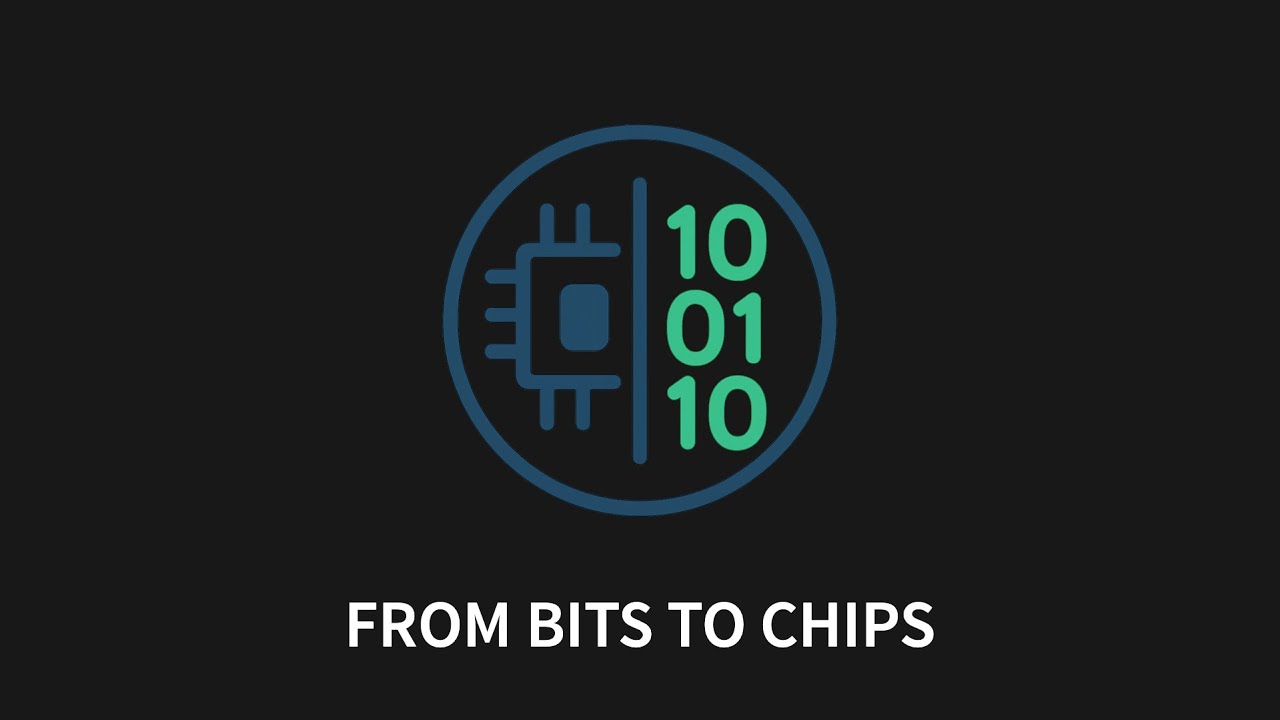nand2cpu — From a Single NAND Gate to a 16-bit ALU

1. Context & Objective
People often hear “any digital system can be built from NAND”. This project makes that statement concrete: a reproducible path from a single universal gate to a working 16-bit Arithmetic Logic Unit with minimal tooling (Verilog + Python) and systematic verification.
2. Pedagogical Architecture (Bottom-Up)
- Parametric universal primitive (
nand_gate.v) - Derived gates by structural composition (AND, OR, etc.)
- Bit to word level generalization (8-bit operands)
- Introduce arithmetic & logical ops (8-bit ALU)
- Scale to 16 bits (carry chaining)
- Add a textual assembler → 16-bit machine code
- Automated testbenches (Icarus Verilog)
3. Repository Structure (Snapshot)
src/rtl/— Verilog modules (gates + ALUs)src/testbenches/— Focused testbenchessrc/fpga/— Future top-level for FPGA mappingtools/assembler/— Parser & encoder (Python)tools/scripts/— Build / simulation helpersexamples/— Assembly examplesdocs/— Scripts and pedagogical slides
4. Core Logic Modules
4.1 Universality of NAND
NAND is functionally complete: by combining inversion and conjunction you recover all other boolean operators. The educational value lies in explicit reconstruction rather than hand-waving: every subsequent gate in the library is expressed structurally in terms of nand_gate, keeping the dependency graph transparent and auditable.
NOT A = NAND(A, A)AND(A,B) = NOT(NAND(A,B))OR(A,B) = NAND(NOT A, NOT B)
Each primitive is parameterized via WIDTH, enabling reuse from 1 bit to N bits without duplicating logic. Parameterization keeps the pedagogical jump (bit → bus) incremental: learners reuse mental models instead of confronting an all-new abstraction.
4.2 8-bit ALU
Supported operations (3-bit opcode): 000 ADD, 001 SUB, 010 AND, 011 OR, 100 XOR, 101 SHL, 110 SHR, 111 NOT. Internally the ALU partitions functionality into three parallel functional units whose results enter a final result multiplexer selected by the opcode. This separation clarifies where to extend (e.g., future rotate or arithmetic shift).
- Extended internal register (9 bits) captures carry.
- Semantic decoupling between output value and carry flag.
- Intentionally simple: no pipelining, no exposed Overflow/Zero (yet).
4.3 16-bit Extension
Strategy: chain two 8-bit ALUs with explicit carry propagation. A deliberate choice was not to prematurely optimize with a carry-lookahead so the latency penalty of ripple chaining remains visible and measurable—an on-ramp to performance discussions.
5. Mini Python Assembler
5.1 Purpose
Bridge a readable symbolic format (mnemonics + registers) to a compact 16-bit encoding aligned with the ALU design.
5.2 Instruction Format (Current)
[15:13] Opcode (3 bits)
[12:10] Rd
[9:7] Rs1
[6:4] Rs2 (or single source depending on type)
[3:0] Reserved (future immediates / flags)5.3 Software Pipeline
parser.py: line cleanup, mnemonic & operand extractionencoder.py: mnemonic → opcode mapping, bitfield packingmain.py: orchestration, emits.bin+ human-readable.hex
5.4 Current Limits (Opportunities)
- No label resolution for branching (labels collected but unused)
- No immediates or memory operations
- No pseudo-instructions
- Minimal error reporting (range / register validation basic)
6. Tests & Validation
6.1 Philosophy
Each abstraction level has a focused testbench for fast isolation of regressions. The design philosophy: small deterministic stimuli first (unit tests for gates), then **representative functional cases** (ALU ops), finally **integrated toolchain proofs** (assembler + simulation), before contemplating randomized fuzzing.
6.2 Emblematic Example (7 + 8 = 15)
// add7_plus_8.v
A = 7;
B = 8;
Op = 3'b000; // ADD
#10;
assert(Y == 15);
6.3 Test Categories
- Primitive logic validation (NAND)
- 16-bit ALU functional validation (chaining integrity)
- Pedagogical scenario (7 + 8)
- Assembler binary generation + hex inspection
6.4 Potential Extensions
- Randomized (fuzz) ALU test vectors
- Coverage metrics (Verilator + gcov)
- CI non-regression (GitHub Actions)
7. Findings & Insights
| Theme | Observation | Implication |
|---|---|---|
| Universality | NAND reconstructs everything | Deepens structural understanding |
| Parametrization | WIDTH cuts duplication | Scales to wider buses |
| Logic vs ISA | Early assembler clarifies contract | Preps pipeline integration |
| ALU Simplicity | Pure combinational core | Easy for timing exploration |
| 8→16 Chaining | Highlights carry cost | Motivates faster adders |
| Compact Encoding | Low 4 bits reserved | Forward compatible evolution |
8. Constraints & Deliberate Choices
- No pipeline (clarity first)
- No exposed status flags (episode scope)
- Minimal cross-lane shift sophistication
- Assembler intentionally minimal (no macros)
9. Technical Roadmap
10. Portfolio Relevance
- Vertical mastery: boolean logic → architecture
- Complementary tooling (assembler)
- Testing discipline (Make + scripts)
- Readable, extensible code
- Coherent educational documentation
11. Illustrative Snippets
// Universal NAND gate (conceptual)
assign y = ~(a & b);
// 16-bit ALU chaining (conceptual)
// ALU_low (A[7:0], B[7:0]) → carry → ALU_high (A[15:8], B[15:8])
// Encoding (ADD R0,R1,R2)
// Opcode=000 Rd=000 Rs1=001 Rs2=010 xxxx
12. Personal Lessons (Neutral)
- Early convention formalization removes ambiguity.
- A minimal assembler forces ISA stabilization.
- Fine-grained testbenches shorten diagnosis cycles.
- Reserved bits prevent format rewrites later.
13. Current Limitations
- No scripted timing measurements
- No large-scale fuzzing
- No multi-file assembly linking
- No memory / PC / branching yet
14. Quick Reproduction
# macOS
brew install icarus-verilog python3 make
# Demo (7 + 8 = 15)
make sim-add7_plus_8
# 16-bit ALU test
make sim-tb_alu16
# Assemble example
make assembler
hexdump -C tools/assembler/test.bin
15. Pedagogical Extensions
- Rewrite ALU structurally (half/full adders explicit)
- Add Zero / Carry / Overflow flags
- Enable labels & immediates in assembler
- Fuzz script (random A,B,Op + Python oracle)
16. Conclusion
A clear foundation: minimal logical core elevated to a working 16-bit ALU with light tooling, paving the way for memory, pipelining, register file, control path, and execution of multi-instruction programs. The explicit layering (primitive → composition → word ops → ALU → assembler → tests) makes future architectural steps (control unit, instruction fetch, branch handling) feel evolutionary rather than abrupt. In short: a transparent, inspectable learning artifact that turns a textbook aphorism into verifiable silicon logic.
17. Resources (curated references & assets)
-
REPO
Source Code
Verilog RTL, assembler, testbenches. Reproduce every example locally.
github.com/promaaa/nand2cpu - DOCS
- VIDEO
- REF
- LICENSE